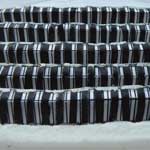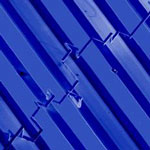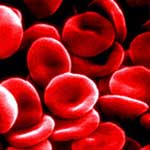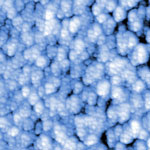Showing Spotlights 1801 - 1808 of 2783 in category All (newest first):
 Previous studies have revealed that single-walled carbon nanotubes (SWCNTs) strongly absorb light, especially in the near-infrared region, and convert it into heat. There even has been a report that fluffy SWCNTs can burst into flames when exposed to a camera flash, which means the local temperature has reached 600-700C. This effect has already been used to develop effective CNT-based cancer killers or extremely dark materials. In a new twist, researchers in China have now discovered that SWCNT buckypapers have a large Seebeck coefficient, indicating a strong capability to convert heat into electricity. Based on this, they have designed an opto-electronic power source which converts the incident light into electricity. While this has been discussed as a theoretical mechanism, the team at Tsinghua University in Beijing has actually fabricated an integrated device that outputs a macroscopic voltage, moving forward towards practical applications.
Previous studies have revealed that single-walled carbon nanotubes (SWCNTs) strongly absorb light, especially in the near-infrared region, and convert it into heat. There even has been a report that fluffy SWCNTs can burst into flames when exposed to a camera flash, which means the local temperature has reached 600-700C. This effect has already been used to develop effective CNT-based cancer killers or extremely dark materials. In a new twist, researchers in China have now discovered that SWCNT buckypapers have a large Seebeck coefficient, indicating a strong capability to convert heat into electricity. Based on this, they have designed an opto-electronic power source which converts the incident light into electricity. While this has been discussed as a theoretical mechanism, the team at Tsinghua University in Beijing has actually fabricated an integrated device that outputs a macroscopic voltage, moving forward towards practical applications.
Jul 29th, 2010
 Imagine a device the size of - and nearly as cheap as - a grain of sand which is capable of analyzing the environment around it, recognize its chemical composition, and report it to a monitoring system. This is the concept of nanotechnology-based electronic noses (e-nose) - miniature electronic devices which mimic the olfactory systems of mammals and insects and which will lead to better, cheaper and smaller sensor devices. An international team of researchers has made a further step towards this vision and demonstrated a novel analytical sensor which mimics our olfaction system. The difference between this and similar prior e-noses is that the active element of this new device is an individual wedge-like nanowire (nanobelt) made of tin dioxide. The required diversity of the sensing elements is encoded in the nanobelt morphology via longitudinal width variations of the nanobelt realized during its growth and via functionalization of some of the segments with palladium catalyst.
Imagine a device the size of - and nearly as cheap as - a grain of sand which is capable of analyzing the environment around it, recognize its chemical composition, and report it to a monitoring system. This is the concept of nanotechnology-based electronic noses (e-nose) - miniature electronic devices which mimic the olfactory systems of mammals and insects and which will lead to better, cheaper and smaller sensor devices. An international team of researchers has made a further step towards this vision and demonstrated a novel analytical sensor which mimics our olfaction system. The difference between this and similar prior e-noses is that the active element of this new device is an individual wedge-like nanowire (nanobelt) made of tin dioxide. The required diversity of the sensing elements is encoded in the nanobelt morphology via longitudinal width variations of the nanobelt realized during its growth and via functionalization of some of the segments with palladium catalyst.
Jul 28th, 2010
 Numerous pathogens can cause bloodstream infections (sepsis) and the most straightforward cure is to remove the disease-causing factors from a patient's blood as quickly as possible. Several methods, like dialysis and plasma filtration/exchange, are already widely and routinely applied for this purpose. Demonstrating a novel use of nanomagnets, researchers in Switzerland have rapidly and selectively removed heavy metal ions, overdosed steroid drugs and proteins from human blood. This nanomagnet-based purification method avoids fouling of filter membranes and benefits from a high external surface area, and a correspondingly fast diffusion. Toxins or pathogens can be selectively removed from whole blood within minutes.
Numerous pathogens can cause bloodstream infections (sepsis) and the most straightforward cure is to remove the disease-causing factors from a patient's blood as quickly as possible. Several methods, like dialysis and plasma filtration/exchange, are already widely and routinely applied for this purpose. Demonstrating a novel use of nanomagnets, researchers in Switzerland have rapidly and selectively removed heavy metal ions, overdosed steroid drugs and proteins from human blood. This nanomagnet-based purification method avoids fouling of filter membranes and benefits from a high external surface area, and a correspondingly fast diffusion. Toxins or pathogens can be selectively removed from whole blood within minutes.
Jul 27th, 2010
 How to regulate nanotechnology and the application of nanomaterials has been quite a controversial issue in recent years. While for instance non-governmental organizations (NGOs) like Greenpeace and Friends of the Earth consider the existing regulatory situation to be inadequate and are urging a strictly precautionary approach, industry representatives are instead seeking the development of specific guidance and standards to support implementation of existing regulations, which are generally seen as adequate. Researchers have used Multicriteria Mapping (MCM) to study why some regulatory options - bans, moratoriums, voluntary measures, etc. - are deemed to be acceptable/unacceptable by various stakeholders in the U.S. and the criteria they use to evaluate the different regulatory options. Not surprisingly, the largest difference in ranking of the policy options can be observed between environmental NGOs and the representatives from the industrial companies and the trade association.
How to regulate nanotechnology and the application of nanomaterials has been quite a controversial issue in recent years. While for instance non-governmental organizations (NGOs) like Greenpeace and Friends of the Earth consider the existing regulatory situation to be inadequate and are urging a strictly precautionary approach, industry representatives are instead seeking the development of specific guidance and standards to support implementation of existing regulations, which are generally seen as adequate. Researchers have used Multicriteria Mapping (MCM) to study why some regulatory options - bans, moratoriums, voluntary measures, etc. - are deemed to be acceptable/unacceptable by various stakeholders in the U.S. and the criteria they use to evaluate the different regulatory options. Not surprisingly, the largest difference in ranking of the policy options can be observed between environmental NGOs and the representatives from the industrial companies and the trade association.
Jul 26th, 2010
 Quite a lot of nanotechnology research and manufacturing efforts go into synthesizing metal-based nanoparticles. Unfortunately, some of the nanoparticle manufacturing processes themselves as well as the final nanoparticle materials may be of potential concern for environmental regulators and for researchers attempting to address nanomaterial toxicity. As an alternative to using these potentially hazardous metal-based nanoparticles, some researchers are suggesting the use of naturally occurring nanoparticles. However, this area has not yet been well explored with regard to natural nanoparticles' diverse properties and potential applications. Researchers have now made the discovery that naturally occurring nanoparticles have unique optical properties. In addition, they are less toxic and biodegradable than their synthesized, metal-based counterparts. This discovery makes it likely that scientists will be able to find more biocompatible nanoparticles to replace metal-based nanoparticles, predominantly for biomedical applications.
Quite a lot of nanotechnology research and manufacturing efforts go into synthesizing metal-based nanoparticles. Unfortunately, some of the nanoparticle manufacturing processes themselves as well as the final nanoparticle materials may be of potential concern for environmental regulators and for researchers attempting to address nanomaterial toxicity. As an alternative to using these potentially hazardous metal-based nanoparticles, some researchers are suggesting the use of naturally occurring nanoparticles. However, this area has not yet been well explored with regard to natural nanoparticles' diverse properties and potential applications. Researchers have now made the discovery that naturally occurring nanoparticles have unique optical properties. In addition, they are less toxic and biodegradable than their synthesized, metal-based counterparts. This discovery makes it likely that scientists will be able to find more biocompatible nanoparticles to replace metal-based nanoparticles, predominantly for biomedical applications.
Jul 21st, 2010
 The alarming rise of carbon dioxide in the atmosphere has led a numerous proposals on how to capture and store carbon dioxide in order to mitigate the damaging emissions from fossil fuels. Popular proposals, some already being tested on a large scale, involve carbon sequestration and subsequent storage in geological formations (geo-sequestration). Other ideas revolve around recycling captured carbon dioxide, for instance by converting it into hydrocarbons that can be re-used to make fuel or plastics. While these solutions would result in removing some carbon dioxide from the atmosphere, their disadvantages are that most of them are expensive, technologically challenging, or energy-intensive. Researchers have now presented the first experimental evidence of a new solar conversion process, combining electronic and chemical pathways, for carbon dioxide capture in what could become a revolutionary approach to remove and recycle CO2 from the atmosphere on a large scale. Rather than trying to sequester or hide away excess carbon dioxide, this new method allows it to be stored as solid carbon or converted in useful products.
The alarming rise of carbon dioxide in the atmosphere has led a numerous proposals on how to capture and store carbon dioxide in order to mitigate the damaging emissions from fossil fuels. Popular proposals, some already being tested on a large scale, involve carbon sequestration and subsequent storage in geological formations (geo-sequestration). Other ideas revolve around recycling captured carbon dioxide, for instance by converting it into hydrocarbons that can be re-used to make fuel or plastics. While these solutions would result in removing some carbon dioxide from the atmosphere, their disadvantages are that most of them are expensive, technologically challenging, or energy-intensive. Researchers have now presented the first experimental evidence of a new solar conversion process, combining electronic and chemical pathways, for carbon dioxide capture in what could become a revolutionary approach to remove and recycle CO2 from the atmosphere on a large scale. Rather than trying to sequester or hide away excess carbon dioxide, this new method allows it to be stored as solid carbon or converted in useful products.
Jul 16th, 2010
 Here is a perfect example of how someone, who apparently doesn't understand or care much about the science, writes a sensational press release hyping nanotechnology by cherry-picking information and distorting issues. And all that to sell a product that doesn't even have to do with nanotechnology. Two days ago we ran a press release from Thomson Reuters about a brief report they compiled on patent data relating to nanotechnology in the cosmetics industry. Now, Thomson Reuters is in the business of selling information and information services products and applications. Their press release basically is advertising for their IP Market Reports. There is nothing wrong with that. What is very wrong, though, is the nonsense and unbalanced take on certain aspects on nanotechnologies. Let's take a closer look.
Here is a perfect example of how someone, who apparently doesn't understand or care much about the science, writes a sensational press release hyping nanotechnology by cherry-picking information and distorting issues. And all that to sell a product that doesn't even have to do with nanotechnology. Two days ago we ran a press release from Thomson Reuters about a brief report they compiled on patent data relating to nanotechnology in the cosmetics industry. Now, Thomson Reuters is in the business of selling information and information services products and applications. Their press release basically is advertising for their IP Market Reports. There is nothing wrong with that. What is very wrong, though, is the nonsense and unbalanced take on certain aspects on nanotechnologies. Let's take a closer look.
Jul 15th, 2010
 Researchers in the UK have now conducted experiments that explored the elementary question of what it is that makes some bacteria pathogenic, and some not? Based on their findings, they have demonstrated that a simple vesicle (nanocapsule) system can be used as a 'nano-Trojan horse' for controlling bacterial growth and infection. Integrated into wound dressings, this novel material can automatically detect infection by pathogenic bacteria and respond to this by releasing an antibiotic into the wound, and changing color to alert medical staff. The researchers show that pathogenic bacteria can be used to be the agents of their own destruction by releasing toxins that rupture nanocapsules containing an antimicrobial agent.
Researchers in the UK have now conducted experiments that explored the elementary question of what it is that makes some bacteria pathogenic, and some not? Based on their findings, they have demonstrated that a simple vesicle (nanocapsule) system can be used as a 'nano-Trojan horse' for controlling bacterial growth and infection. Integrated into wound dressings, this novel material can automatically detect infection by pathogenic bacteria and respond to this by releasing an antibiotic into the wound, and changing color to alert medical staff. The researchers show that pathogenic bacteria can be used to be the agents of their own destruction by releasing toxins that rupture nanocapsules containing an antimicrobial agent.
Jul 14th, 2010
 Previous studies have revealed that single-walled carbon nanotubes (SWCNTs) strongly absorb light, especially in the near-infrared region, and convert it into heat. There even has been a report that fluffy SWCNTs can burst into flames when exposed to a camera flash, which means the local temperature has reached 600-700C. This effect has already been used to develop effective CNT-based cancer killers or extremely dark materials. In a new twist, researchers in China have now discovered that SWCNT buckypapers have a large Seebeck coefficient, indicating a strong capability to convert heat into electricity. Based on this, they have designed an opto-electronic power source which converts the incident light into electricity. While this has been discussed as a theoretical mechanism, the team at Tsinghua University in Beijing has actually fabricated an integrated device that outputs a macroscopic voltage, moving forward towards practical applications.
Previous studies have revealed that single-walled carbon nanotubes (SWCNTs) strongly absorb light, especially in the near-infrared region, and convert it into heat. There even has been a report that fluffy SWCNTs can burst into flames when exposed to a camera flash, which means the local temperature has reached 600-700C. This effect has already been used to develop effective CNT-based cancer killers or extremely dark materials. In a new twist, researchers in China have now discovered that SWCNT buckypapers have a large Seebeck coefficient, indicating a strong capability to convert heat into electricity. Based on this, they have designed an opto-electronic power source which converts the incident light into electricity. While this has been discussed as a theoretical mechanism, the team at Tsinghua University in Beijing has actually fabricated an integrated device that outputs a macroscopic voltage, moving forward towards practical applications.
 Subscribe to our Nanotechnology Spotlight feed
Subscribe to our Nanotechnology Spotlight feed





